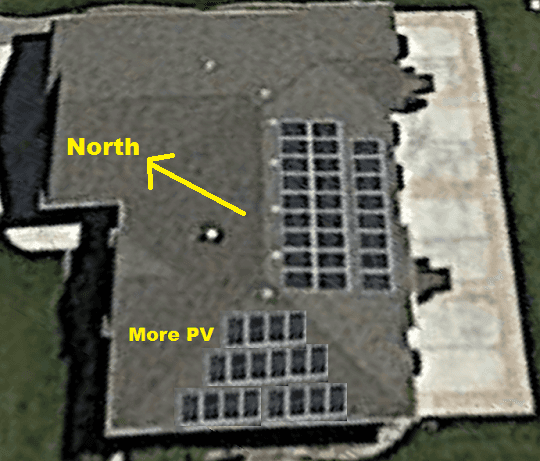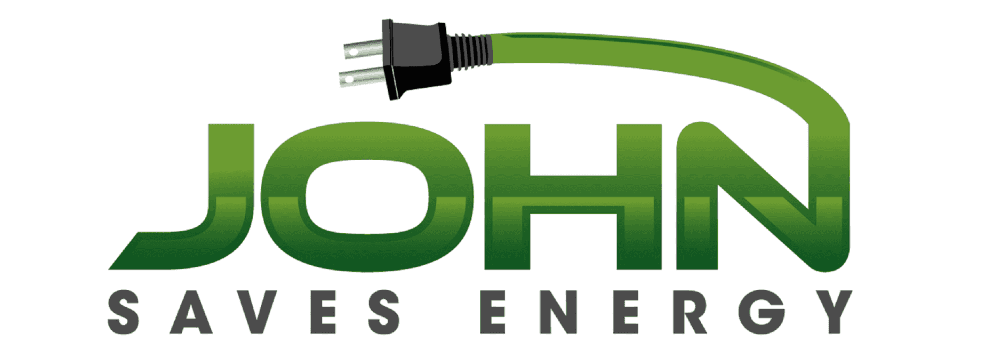Published Monday January 19, 2015: Updated 5/31/2015
4 Years of Solar
November 2014 marked 4 years since we installed solar panels on our house roof. This forever changed the way I look at energy production and consumption.
During this time, the initial investment has paid for itself through the energy savings in our home and from the gasoline savings of driving electric vehicles.

Even with relatively inexpensive gasoline and Utah's low electricity rates, ($0.10 per kWh), the solar panels paid for themselves in only 4.2 years. From here on out, all the energy they provide is literally FREE!!!!
Not counting the Leaf's gasoline savings, the array would pay for itself by March 2016.
Energy Improvements
On one end of the spectrum we have made great strides in energy efficiency improvements, (without sacrificing convenience and luxury). We also cut ties with fossil fuel and no longer burn fossil fuels directly in our home or vehicles.
Our entire home (lighting, appliances, HVAC, laundry, cooking and hot water heating) are now 100% electric, as are both our vehicles. The solar panels supply 63% of that energy and the electric grid provides the rest.
Energy additions
On the other end of the spectrum, we keep adding more things that require energy. As our original $5,500 per year total-energy bill has dwindled down to around $500/year, we since added a few more power consumers that have kept our power bill from reaching $0 per year.
When your energy doesn't cost you a dime, it is human nature to stretch out and be a little more liberal with it; Even giving it away at times.
If there were no additional costs and no negative consequences, wouldn't you opt to have a more comfortable and luxurious house too?
I have no intention of giving up on luxuries just for the sake of being net-zero. Still, it bugs me that I have not yet reached my goal for 'true' net zero energy consumption for all our home energy usage and vehicles.
To this end, we have just made a down-payment on an additional 5.2 kW solar array which I hope to install in a few months. This will cover our total energy usage and then some, (future projects, additional electric vehicles, experiments and more amenities).

The above chart shows our monthly energy usage for 2014, with current and projected PV production totals (added in white). After installing this additional array, if our annual energy consumption were to match what we used in 2014, by the end of the year, there would be a 2682 kWh surplus.
Install your own if you are able!
Solar panels prices have fallen a lot and are now the least expensive part of a solar installation. Labor is now the most expensive part and makes up 2X the cost of materials. As such, I will be doing my own install, (like I did 4 years ago).
"Come on solar installers! Just because there are subsidies, doesn't mean you should inflate your labor costs 2X above the price of materials!" While there are a few gotcha's involved that can and do drive up labor costs, (steep roofs, tile roofs, multiple surfaces, commercial installations, breaker box upgrades), for a single surface, asphalt shingle truss roof it's very strait forward.
This Isn't Rocket Science and You Don't Need A Doctorate Degree - (Although their labor rates suggest otherwise)
Installing solar panels is about as complex as shingling a roof and adding an additional circuit breaker. I have helped several households 'legally' install their own solar array. A typical job 'should' only cost about $3000-$5000 for all the design and labor, (before subsidies). Not $20,000! I seriously doubt the installers are making $650 per hour, (yes that's six-hundred and fifty dollars per hour), so where is all that money going?
If I could somehow set the precedent for the cost of labor, then a good rule of thumb would be $1000 to $1500 of labor for every kW of PV solar installed (for arrays ranging from 1-3 kW). For larger solar arrays installation costs would be even lower, like $600-$900 for every kW of PV solar installed. All of these prices are the install costs before subsidies.
This ain't rocket science. Yes it is high, laborious work but it's not like you need a doctorate degree to install these things! I'm sorry but the outrageous prices they charge for simple PV designs, (sub-par, under-performing designs at that), and labor, gives a black eye to the whole green industry. The only reason these solar installation companies are successful at all is because the technology is so AWESOME! and there is such a high demand for them.
Maybe Installers aren't all that bad
On the other hand, I guess you have to weigh the risks as well. One nasty fall from your roof and you just accrued $20,000+ in hospital bills, or worse, funeral expenses. In that case, maybe the extra expense of hiring an installer is worth it.
Since there is such a demand for solar installations right now, these solar installers can charge whatever the market will bare. So I guess I can't blame them for charging so much if they truly are extremely busy all the time. Maybe in a few years, as more 'qualified' companies get into the solar installation business, demand will match supply and install costs will drop to where they 'should' be.
Needless to say, when it comes to installing my own solar array, I am not alone. If you feel comfortable working long hours on a high rooftop and decide to venture to install your own grid-tie array, make sure you get a building permit, obey all local building codes and BE CAREFUL! Wholesale companies may also provide the building plans for FREE when you buy a solar array larger than 4 kW.

Here is what our roof 'might' look like after we install 18 more PV panels. The panels in the middle-right (of the above satellite photo) are the existing 240 watt panels and face south-east. The panels on the bottom (photo-shopped), are 295 watt panels and will face south-west. I estimate these new panels will perform,(watt for watt), about as well as the original array.
As a south-west facing array, it will produce its peak power later in the afternoon, in sync with when the grid demands more energy.

and here is what the install ended up looking like.
Solar panels really have come down in price quite a bit in the last 4 years. This new 5.2 kW array will only cost us about $10,000 initially. After the 30% tax credit, it will end up only costing us $6000. We can't claim the $2000 Utah energy credit this time because we already got it on the first PV install.
Initial Cost of Additional 5.2 kW PV Solar Array
Federal Tax Credit
Net Cost of 5.2 kW Solar Array
Energy Production/year from the 5.2 kW Array
$10,000.00
$ -3000.00
$ 7,000.00
$ 835.00
Since the initial solar array investment has already paid off, I can roll the gasoline savings of driving electric cars into this new array.
Gasoline has since dropped to $2/gallon so that will make the EV energy cost savings lower and the energy ROI longer.
Gasoline Savings (Geo EV)
Gasoline Savings (Nissan Leaf)
Total Energy Savings
$800.00
$ 960.00
$2595.00
At this rate, the energy savings alone will pay for the cost of this new solar array in 2.7 years.
If I don't consider the gasoline savings at all in the ROI calculations it will still take only 8.38 years, (assuming electricity costs remain the same, but they most likely continue to go up).
Update 4/10/2015:
On March 15th of this year, we switched on another 5.2 kW of PV solar for our home.

This array should put us deep into net-positive territory for all our energy usage (lights, gadgets, appliances, hot water, HVAC and two electric cars). Plenty of extra, free 100% solar powered electricity for years to come.

